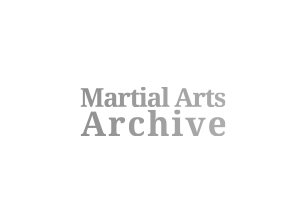Elements
Elements
I-ai-do, 居合道
[
English
]
- Country :
- Japan
Description :
Iaido is the Japanese art of drawing, cutting, and resheathing the katana. It places a great emphasis on correctness of form, precision and efficiency of movement, and mental focus. Practitioners of the art – iaidoka – use real swords (or else replica blades which are still quite dangerous) so it is primarily a solo art. The practice is conducted performing kata or sets forms that teach how to respond to attacks made by opponents in various positions and situations. Many techniques take place from a formal kneeling position (seiza), while others begin from a half-kneeling position, or from standing. The ideal is to be able to deal with an attack at any time, no matter what you are doing. The character 居 "i" means "to be" (especially "to sit") in a particular place, while 合 "ai" means "to match" or "to respond". Taken together, the name can be interpreted to mean “the way of responding appropriately to any situation you are in.”
On the battlefields of medieval Japan, samurai were armed with various weapons such as bows, spears, halberds, and eventually firearms. But when these weapons failed, or when fighting came down to close-quarter combat, the ability to swiftly draw one’s sword and the attack were essential. The exquisite sharpness of the Japanese sword meant that fights could end an instant after they began, so quick actions with no wasted motions meant the difference between life and death. Batto (“sword drawing”) was taught as one of the many martial arts required for samurai. Schools of swordsmanship developed that placed a great emphasis on the initial draw-and-cut. The name iaido came later.
In the 16th century, Hayashizaki Jinsuke Shigenobu founded Shin Muso Hayashizaki-ryu, a school of iaido that spread across Japan and branched off into numerous other traditions or ryuha. Today, the most popular are Muso Shinden-ryu, Muso Jikiden Eishin-ryu, Tamiya-ryu, and Mugai-ryu, but dozens, if not hundreds, of other styles exist. Each has its own stylistic differences and approach to training.
Iaido was outlawed by the occupation forces after World War II, but after the art was reinstated, iaidoka created groups to standardize practice. The largest group is the Iaido section of the All-Japan Kendo Federation. Iai and kendo have a special relationship, and are sometimes said to be “Two wheels of the same cart,” with many people practicing both arts. Kendo teaches distance and timing with a live opponent, while iaido teaches the correct use of a real sword.
On the battlefields of medieval Japan, samurai were armed with various weapons such as bows, spears, halberds, and eventually firearms. But when these weapons failed, or when fighting came down to close-quarter combat, the ability to swiftly draw one’s sword and the attack were essential. The exquisite sharpness of the Japanese sword meant that fights could end an instant after they began, so quick actions with no wasted motions meant the difference between life and death. Batto (“sword drawing”) was taught as one of the many martial arts required for samurai. Schools of swordsmanship developed that placed a great emphasis on the initial draw-and-cut. The name iaido came later.
In the 16th century, Hayashizaki Jinsuke Shigenobu founded Shin Muso Hayashizaki-ryu, a school of iaido that spread across Japan and branched off into numerous other traditions or ryuha. Today, the most popular are Muso Shinden-ryu, Muso Jikiden Eishin-ryu, Tamiya-ryu, and Mugai-ryu, but dozens, if not hundreds, of other styles exist. Each has its own stylistic differences and approach to training.
Iaido was outlawed by the occupation forces after World War II, but after the art was reinstated, iaidoka created groups to standardize practice. The largest group is the Iaido section of the All-Japan Kendo Federation. Iai and kendo have a special relationship, and are sometimes said to be “Two wheels of the same cart,” with many people practicing both arts. Kendo teaches distance and timing with a live opponent, while iaido teaches the correct use of a real sword.
Information source :

